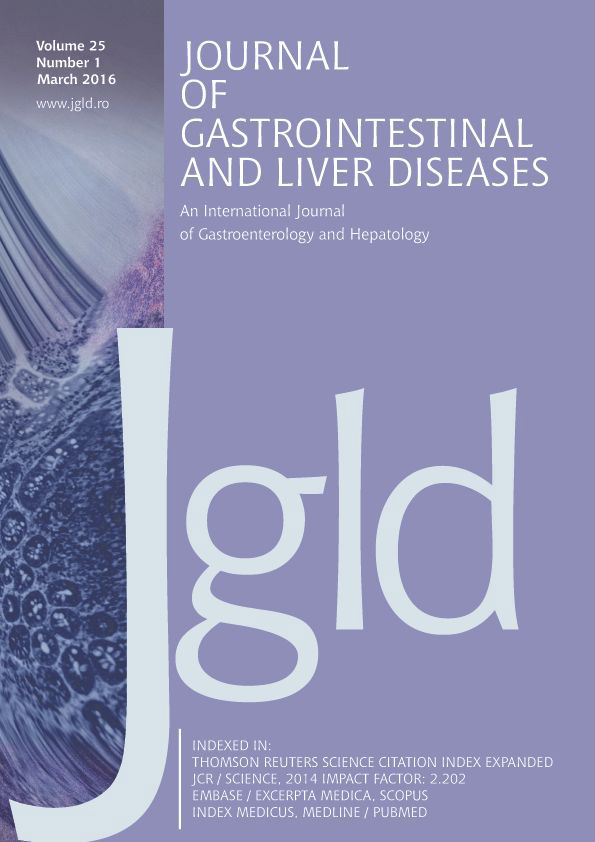Secretin-enhanced Magnetic Resonance Cholangiopancreatography in Pancreatic Insufficient and Pancreatic Sufficient Cystic Fibrosis Patients
DOI:
https://doi.org/10.15403/jgld.2014.1121.251.chpKeywords:
pancreatitis, fecal elastase, Wirsung duct, CFTRAbstract
Background & Aims: Although indirect methods of assessment of the exocrine pancreatic function have become the standard of care in the monitoring of pancreatic status, it still remains a current clinical challenge. Our aim was to compare the width of the pancreatic duct in pancreatic insufficient (PI) and pancreatic sufficient (PS) cystic fibrosis (CF) patients using secretin-enhanced magnetic resonance cholangiopancreatography (SE-MRCP).
Methods: Thirty-seven CF patients were enrolled for this cross-sectional study, including 21 PI and 16 PS, all of whom underwent SE-MRCP. Measurement of the diameter of the pancreatic duct was performed in the head, body, and the tail of the pancreas at the baseline and after 1, 2, 3, 5, and 10 minutes after secretin administration.
Results: The diameter of the pancreatic duct in the head of the pancreas after 5 and 10 minutes of secretin injection was greater in PI than in PS patients (median = 2.0 mm [interquartile range: 1.6-3.0] vs. 2.0 mm [1.0-2.0] and 2.0 mm [1.4-2.0] vs 1.0 mm [1.0-2.0], p=0.047 and p=0.040, respectively). Areas under ROC curves for discriminating between PI and PS patients were 0.693 (95% CI 0.521-0.866) and 0.698 (95% CI 0.528-0.868), respectively. No other differences in the width of the duct were identified at the baseline or during SE-MRCP.
Conclusions: The measurement of the diameter of the pancreatic duct during secretin stimulation does not allow for differentiating between PS and PI status in CF patients.
Abbreviations: CF: cystic fibrosis; CFTR: cystic fibrosis transmembrane conductance regulator; ELISA: enzyme-linked immunosorbent assay; ERCP: endoscopic retrograde cholangiopancreatography; E1: elastase-1; MRI: magnetic resonance imaging; PI: pancreatic insufficient; PS: pancreatic sufficient; SCT gene: secretin gene; SE-MRCP: secretin-enhanced magnetic resonance cholangiopancreatography; T: tesla; TR: repetition time; TE: echo time.


